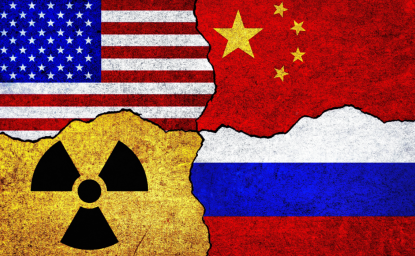Conversations about supply chain resilience are often dominated by critical minerals and semiconductors. But the US also suffers from persistent shortages in another important sector: pharmaceuticals. There were over 300 active drug shortages in 2023, including several key antibiotics and intensive care unit drugs. These shortages provide good reasons to rethink America’s critical pharmaceutical dependencies.
Partners closer to home can help provide a solution. Research shows that Mexico manufactures drugs more affordably—at a high standards—than many other countries. Despite that, Mexico’s share of the US market remains modest as it competes against leading producers of generic drugs and active pharmaceutical ingredients (APIs) in China and India.
More cooperation across North America is needed to stabilize supply chains in this critical sector. Here, we highlight several of the core dependencies and offer some suggestions for how to lock in stronger Mexico-US trade ties for the benefit of public health.
Existing Dependencies
Mexico’s pharmaceutical industry has been expanding and diversifying. Today, Mexico exports more than 50 pharmaceutical goods that it didn’t make just 10 years ago. In 2023, Mexico exported 165 of the 350 pharmaceutical and API products designated as critical by the International Trade Administration to the United States.[i] The total value of those exports currently exceeds $2.5 billion.
It is not all good news, however. Mexico’s share of total US pharmaceutical imports is relatively small—at only about 1.5 percent. For example, exports of APIs, the essential building blocks of our medications, have not shown the same growth as other areas of the market. Mexico’s API exports rank it 16th among America’s largest API suppliers, lagging competitors like China and India, who rank 2nd and 5th, respectively.
The comparison is even starker when looking at which countries dominate trade in specific goods. There are over 100 pharmaceuticals and APIs where just one country provides over 75 percent of US imports of that good. China provides 35 of them, India provides 12 of them, and Mexico provides just 1.
The concentration of key products in the hands of so few suppliers is a risk for the United States, leaving it vulnerable to disruptions in those relationships. But the need to diversify means opportunities for other partners. Building resilient trade means bringing other players into the game. Mexico is positioned well to be one those players.
Barriers to Market Entry
The Mexican pharmaceutical industry has the potential to fill vital gaps in the US market. Three unresolved issues currently impede a stronger Mexico-US partnership.
One problem is lack of regulatory harmonization. Like the Food and Drug Administration (FDA) in the US, Mexico’s Federal Commission for Protection Against Health Risks (COFEPRIS) ensures that drugs and their component materials are produced safely. COFEPRIS and the FDA announced several cooperative partnerships in recent years, but these efforts focused mainly on medical devices and supplies. There remains more work to be done on medicines and APIs where lengthy approval delays have deterred investment in research and production.
At the same time, Mexican producers face competition from lower-standard producers. Mexico’s generics manufacturers have been largely careful to respect patent laws under the government’s international trade commitments. Unfortunately, other countries developed their generic drug industries before international standards were adopted—or, in some cases, with domestic statutes that did not adopt these standards. Now, as Mexico attempts to gain market share, it has to compete against large, established producers who emerged without intellectual property constraints.
Given these market conditions, investing in expansion is risky. It is expensive to manufacture generics, especially when question marks loom over whether those goods can find a buyer in a US market crowded by competitors. As a result, we observe underinvestment in the industry.
Moving Forward
Short of direct subsidies or price supports, there are several ways to lock in a stronger US-Mexico partnership to reduce vulnerabilities and promote better public health outcomes.
Easing the regulatory burden does not mean reducing standards—it means harmonizing them across the region. Producers currently face uncertainty and delay in the approval process. Adopting common standards can reduce inefficiency while still protecting patients by guaranteeing that drugs are safe and effective. Steps toward greater harmonization may involve building a pre-certification process into USMCA during the upcoming review in 2026. Extending a “Made in America” status to Mexican-made pharmaceuticals would significantly reduce barriers to entry. Local content requirements could also help incentivize regional productions, particularly in the area of APIs.
Of course, political momentum in the US remains focused on bolstering domestic production. Not coincidentally, the outcome of USMCA review remains far from certain. But the bottom line is that the US faces enduring shortages of key pharmaceuticals. These shortages lead to higher costs, long wait times, and poorer health. US neighbors can help.
[i] The analysis here uses 6-digit HS codes to match the best publicly available monthly trade data. The original ITA list includes 8- and 10-digit codes. There are 941 codes for pharmaceuticals and APIs at the level of disaggregation. Trade data comes from the Census Bureau’s USA Trade Online database, which provides monthly imports in constant USD.
Authors

Associate Professor in the School of Government and Public Policy and the James E. Rogers College of Law, University of Arizona


Mexico Institute
The Mexico Institute seeks to improve understanding, communication, and cooperation between Mexico and the United States by promoting original research, encouraging public discussion, and proposing policy options for enhancing the bilateral relationship. A binational Advisory Board, chaired by Luis Téllez and Earl Anthony Wayne, oversees the work of the Mexico Institute. Read more


Wahba Institute for Strategic Competition
The Wahba Institute for Strategic Competition works to shape conversations and inspire meaningful action to strengthen technology, trade, infrastructure, and energy as part of American economic and global leadership that benefits the nation and the world. Read more

Explore More
Browse Insights & Analysis
US Inaction Is Ceding the Global Nuclear Market to China and Russia

Promoting Convergence in US-Brazil Relations




